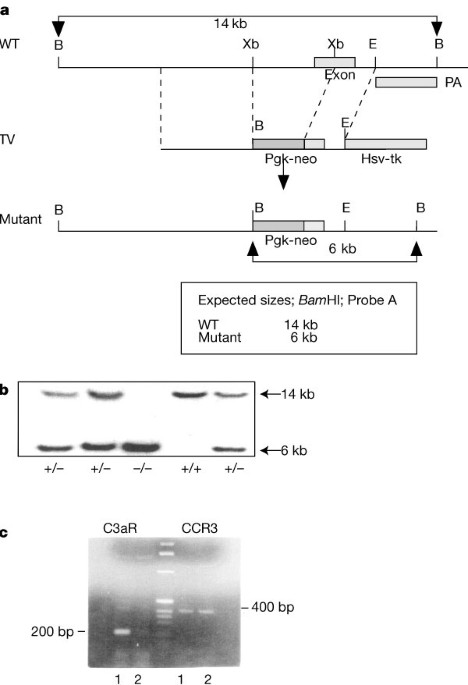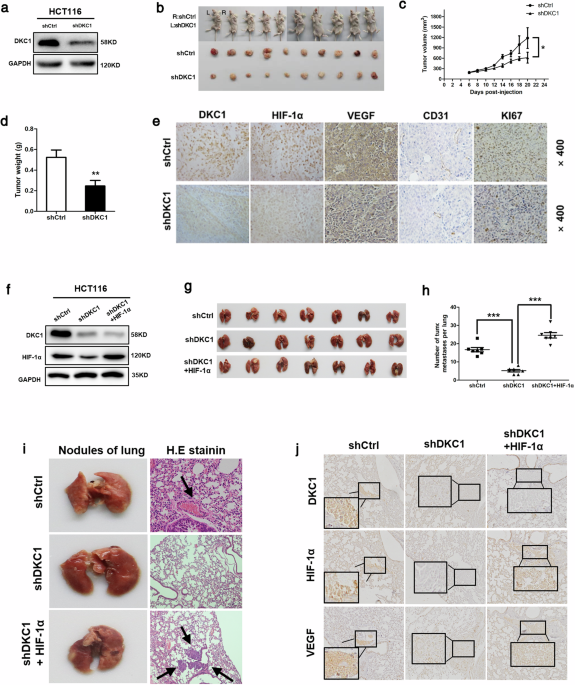
- Select a language for the TTS:
- UK English Female
- UK English Male
- US English Female
- US English Male
- Australian Female
- Australian Male
- Language selected: (auto detect) - EN
Play all audios:
ABSTRACT Asthma is a chronic inflammatory disease of the airways and lung mucosa with a strong correlation to atopy and acquired (IgE) immunity1. However, many features of bronchial asthma,
such as smooth muscle contraction, mucus secretion and recruitment of inflammatory cells, are consistent with the actions of complement anaphylatoxins, in particular C3a and C5a2. Complement
activation forms a central core of innate immune defence against mucosal bacteria, viruses, fungi, helminths and other pathogens. As a system of ‘pattern-recognition molecules’, foreign
surface antigens and immune complexes lead to a proteolytic cascade culminating in a lytic membrane attack2,3. The anaphylatoxins C3a and C5a are liberated as activation byproducts and are
potent pro-inflammatory mediators that bind to specific cell surface receptors and cause leukocyte activation, smooth muscle contraction and vascular permeability2. Here we show that in a
murine model of allergic airway disease, genetic deletion of the C3a receptor protects against the changes in lung physiology seen after allergen challenge. Furthermore, human asthmatics
develop significant levels of ligand C3a following intra-pulmonary deposition of allergen, but not saline. We propose that, in addition to acquired immune responses, the innate immune system
and complement (C3a in particular) are involved in the pathogenesis of asthma. Access through your institution Buy or subscribe This is a preview of subscription content, access via your
institution ACCESS OPTIONS Access through your institution Subscribe to this journal Receive 51 print issues and online access $199.00 per year only $3.90 per issue Learn more Buy this
article * Purchase on SpringerLink * Instant access to full article PDF Buy now Prices may be subject to local taxes which are calculated during checkout ADDITIONAL ACCESS OPTIONS: * Log in
* Learn about institutional subscriptions * Read our FAQs * Contact customer support SIMILAR CONTENT BEING VIEWED BY OTHERS REVEALING THE SIGNALING OF COMPLEMENT RECEPTORS C3AR AND C5AR1 BY
ANAPHYLATOXINS Article 11 May 2023 TYPE 2 IMMUNITY IN ALLERGIC DISEASES Article Open access 17 February 2025 THE OUROBOROS OF AUTOIMMUNITY Article 02 May 2024 REFERENCES * Burrows, B.,
Martinez, F. D., Halonen, M., Barbee, R. A. & Cline, M. G. Association of asthma with serum IgE levels and skin-test reactivity to allergens. _N. Engl. J. Med. _ 320, 271–277 ( 1989).
Article CAS Google Scholar * Gerard, N. P. in _ Asthma_ (eds Barnes, P. J., Grunstein, M. M., Leff, A. R. & Woolcock, A. J.) 639–651 (Lippincott-Raven, Philadelphia, 1997). Google
Scholar * Medzhitov, R. & Janeway, C. A. Jr. Innate immunity: The virtues of a nonclonal system of recognition. _Cell_ 91, 295–298 (1997). Article CAS Google Scholar * Höpken, U. E.,
Lu, B., Gerard, N. P. & Gerard, C. The C5a chemoattractant receptor mediates mucosal defence to infection. _Nature_ 383, 86–89 (1996). Article ADS Google Scholar * Höpken, U. E., Lu,
B., Gerard, N. P. & Gerard, C. Impaired inflammatory responses in the reverse Arthus Reaction through genetic deletion of the C5a receptor. _J. Exp. Med._ 186, 749– 756 (1997). Article
Google Scholar * Osaka, H. _et al._ Expression of C5a receptor in mouse brain: role in signal transduction and neurodegeneration. _Neuroscience_ 88, 1073–1082 (1999). Article CAS Google
Scholar * Bhatia, M. Complement factor C5a exerts an anti-inflammatory effect in acute pancreatitis and pancreatitis-associated lung injury. _Am. J. Physiol._ (submitted). * Tornetta, M.
A., Foley, J. J., Sarau, H. M. & Ames, R. S. The mouse anaphylatoxin C3a receptor. _J. Immunol._ 158 , 5277–5282 (1997). CAS PubMed Google Scholar * Hsu, M. H. _et al._ Cloning and
functional characterization of the mouse C3a anaphylatoxin receptor gene. _Immunogenetics_ 47, 64– 72 (1997). Article CAS Google Scholar * Chao, T. H. _ et al._ Role of the second
extracellular loop of human C3a receptor in agonist binding and receptor function. _J. Biol. Chem._ 274, 9721–9728 (1999). Article CAS Google Scholar * Fischer, W. H. _ et al._ Regulation
of the B cell response to T-dependent antigens by classical pathway complement. _J. Immunol._ 157, 549–556 (1996). CAS Google Scholar * Daffern, P. J. _ et al._ C3a is a chemotaxin for
human eosinophils but not for neutrophils. I. C3a stimulation of neutrophils is secondary to eosinophil activation. _ J. Exp. Med._ 181, 2119–2127 (1995). Article CAS Google Scholar *
Nilsson, G. _ et al._ C3a and C5a are chemotaxins for human mast cells and act through distinct receptors via a pertussis toxin-sensitive signal transduction pathway. _J. Immunol._ 157,
1693– 1698 (1996). CAS PubMed Google Scholar * Stimler-Gerard, N. P. & Galli, S. J. Mast cells in anaphylatoxin-induced spasmogenic activity. _J. Immunol._ 138, 1908–1913 (1987). CAS
PubMed Google Scholar * Stimler, N. P., Gerard, C. & O'Flaherty, J. T. in _Platelet Activating Factor_ (eds Benveniste, J & Arnoux, B.) 195–203 (Elsevier, Amsterdam, 1983).
Google Scholar * Hamelmann, E. _ et al._ Noninvasive measurement of airway responsiveness in allergic mice using barometric plethysmography. _Am. J. Respir. Crit. Care Med._ 156, 766–775 (
1992). Article Google Scholar * Martin, T. R., Gerard, N. P., Galli, S. J. & Drazen, J. M. Pulmonary responses to bronchoconstrictor agonists in the mouse. _ J. Appl. Physiol._ 64,
2318–2323 (1988). Article CAS Google Scholar * Smith, J. K., Chi, D. S., Krish, G., Reynolds, S. & Cambron, G. Effect of exercise on complement activity. _ Ann. Allergy_ 65, 304–310
(1990). CAS PubMed Google Scholar * Onodera, H. _ et al._ Complement system in status asthmatics: analysis of anti-complementary effects induced by methylprendisolone. _Arerugi_ 41,
1567–1574 (1997). Google Scholar * Pepys, J. & Hutchcroft, B. J. Bronchial provocation tests in etiologic diagnosis and analysis of asthma. _Am. J. Respir. Crit. Care Med._ 112, 829–859
( 1975). CAS Google Scholar * Bradley, B. L. _ et al._ Eosinophils, T-lymphocytes, mast cells, neutrophils and macrophages in bronchial biopsy specimens from atopic subjects with asthma:
comparison with biopsy specimens from atopic subjects without asthma and normal control subjects and relationship to bronchial hyperresponsiveness. _J. Allergy Clin. Immunol._ 88, 661–674
(1991). Article CAS Google Scholar * Drazen, J. M. Asthma therapy with agents preventing leukotriene synthesis or action. _ Proc. Assoc. Am. Physicians_ 111, 547– 559 (1999). Article CAS
Google Scholar * Barnes, P. J. & Belvisi, M. G. in _Asthma_ (eds Barnes, P. J., Grunstein, M. M., Leff, A. R. & Woolcock, A. J.) 1051– 1063 (Lippincott–Raven, Philadelphia, 1997).
Google Scholar * Mattoli, S., Soloperto, M., Marini, M. & Fasoli, A. Levels of endothelin in the bronchoalveolar lavage fluid of patients with symptomatic asthma and reversible airflow
obstruction. _J. Allergy Clin. Immunol._ 88, 376–384 (1991). Article CAS Google Scholar * Schwartz, L. B. _ et al._ Generation of C3a anaphylatoxin from human C3 by mast cell tryptase.
_J. Immunol._ 130, 1891– 1895 (1983). CAS PubMed Google Scholar * Humbles, A. A. _ et al._ Kinetics of eotaxin generation and its relationship to eosinophil accumulation in allergic
airways disease: analysis in a guinea pig model _ in vivo_. _J. Exp. Med._ 186, 601– 612 (1997). Article CAS Google Scholar * American Thoracic Society. Lung function testing: selection
of reference values and interpretative strategies. _Am. Rev. Respir. Dis._ 144, 1202–1218 (1991). Download references ACKNOWLEDGEMENTS We thank T. Martin and J. Drazen for comments and
advice; J. Brewer for assistance; D. Zurakowski for help and advice with analysing the statistics; and the staff of ARCH at Children's Hospital for animal care. This work was supported
in part by grants from the NIH to N.P.G. and C.G. at the Perlmutter laboratory and Pfizer Central Research. AUTHOR INFORMATION AUTHORS AND AFFILIATIONS * Ina Sue Perlmutter Laboratory,
Children's Hospital, Harvard Medical School, Boston, 02115, Massachusetts , USA Alison A. Humbles, Bao Lu, Christy A. Nilsson, Norma P. Gerard & Craig Gerard * Division of Pulmonary
and Critical Care Medicine, Brigham and Women's Hospital, Harvard Medical School, Boston, 02115, Massachusetts, USA Craig Lilly & Elliot Israel * Division of Hematology and
Oncology Children's Hospital, Harvard Medical School, Boston, 02115, Massachusetts, USA Yuko Fujiwara Authors * Alison A. Humbles View author publications You can also search for this
author inPubMed Google Scholar * Bao Lu View author publications You can also search for this author inPubMed Google Scholar * Christy A. Nilsson View author publications You can also search
for this author inPubMed Google Scholar * Craig Lilly View author publications You can also search for this author inPubMed Google Scholar * Elliot Israel View author publications You can
also search for this author inPubMed Google Scholar * Yuko Fujiwara View author publications You can also search for this author inPubMed Google Scholar * Norma P. Gerard View author
publications You can also search for this author inPubMed Google Scholar * Craig Gerard View author publications You can also search for this author inPubMed Google Scholar CORRESPONDING
AUTHOR Correspondence to Craig Gerard. RIGHTS AND PERMISSIONS Reprints and permissions ABOUT THIS ARTICLE CITE THIS ARTICLE Humbles, A., Lu, B., Nilsson, C. _et al._ A role for the C3a
anaphylatoxin receptor in the effector phase of asthma . _Nature_ 406, 998–1001 (2000). https://doi.org/10.1038/35023175 Download citation * Received: 17 May 2000 * Accepted: 18 July 2000 *
Issue Date: 31 August 2000 * DOI: https://doi.org/10.1038/35023175 SHARE THIS ARTICLE Anyone you share the following link with will be able to read this content: Get shareable link Sorry, a
shareable link is not currently available for this article. Copy to clipboard Provided by the Springer Nature SharedIt content-sharing initiative



